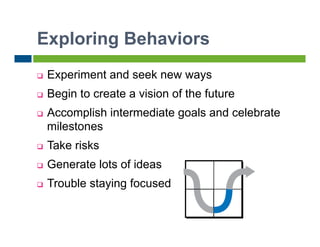The document, presented by Cynthia Scott, Ph.D., emphasizes understanding how the brain responds to change and outlines a predictable path for navigating change while leading teams from resistance to performance. It discusses the impact of the ‘lizard brain’ on human responses to change and offers strategies for increasing resilience among team members. The content also provides practical exercises and behavior models to help leaders manage change effectively.










































